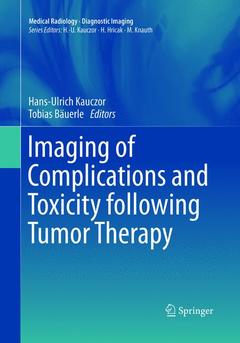Description
Imaging of Complications and Toxicity following Tumor Therapy, Softcover reprint of the original 1st ed. 2015
Diagnostic Imaging Series
Coordinators: Kauczor Hans-Ulrich, Bäuerle Tobias
Language: English
Subjects for Imaging of Complications and Toxicity following Tumor...:
Publication date: 03-2019
314 p. · 17.8x25.4 cm · Paperback
Publication date: 12-2015
314 p. · 17.8x25.4 cm · Hardback
Description
/li>Contents
/li>Comment
/li>
Depending on their mechanism of action, the cytotoxic and targeted drugs and radiotherapy employed in oncologic treatment may cause complications and toxicities in many organ systems, with variable radiologic presentations. This comprehensive and excellently illustrated book covers the basics of therapy-induced complications and toxicities in oncologic patients, identifies their consequences for all the major organs, and describes the imaging of these impacts by means of the various radiologic modalities. By familiarizing radiologists with the most frequent and prominent toxicities that are recognizable on radiologic imaging following tumor therapy, it will facilitate identification of their early manifestations and permit differential diagnosis based on relevant findings.




